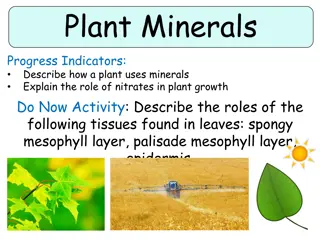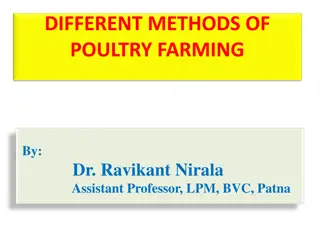Evolution of Farming Practices in Europe
Discover the best farm practices for success in mixed farming systems, the art of managing grain quality with silos, and how modern agrotechnological fusion is reshaping agriculture in Europe. Explore the shift from traditional labor-intensive methods to data-driven precision farming techniques that have revolutionized the industry.
Download Presentation

Please find below an Image/Link to download the presentation.
The content on the website is provided AS IS for your information and personal use only. It may not be sold, licensed, or shared on other websites without obtaining consent from the author.If you encounter any issues during the download, it is possible that the publisher has removed the file from their server.
You are allowed to download the files provided on this website for personal or commercial use, subject to the condition that they are used lawfully. All files are the property of their respective owners.
The content on the website is provided AS IS for your information and personal use only. It may not be sold, licensed, or shared on other websites without obtaining consent from the author.
E N D
Presentation Transcript
Intellectual Output 1: Mixed Farming System (MFS) e-Book Section 7: Smart farming in Europe
Best Farm Practices for Profitable Farming Best way to achieve success is by recording all farm activities for all crops along with usage of farm materials and following good farm management practices. Every crop production requires certain farm practices. Good management practices include proper soil preparation, planting or sowing of crops, plant care management, harvest, and post-harvest management.
The Art of Managing Grain Quality with Silos Silos are permanent storage structures used for grain collection, distribution, and processing The main purpose of using silos is to store large quantities of grains for a long period of time while maintaining grain quality Storage management is a delicate stage in grain production that requires adequate management Silos provide initial grain processing functions, including drying, cleaning, aerating, fumigation, and turning the grains to preserve their condition Grain post-harvest management varies within each silo depending on its characteristics Grain silos can be transported or built on site and can provide different atmospheric conditions for grains Modern grain silo facilities usually consist of a silo tower and a few storage bins that are equipped with different configurations Two types of grain silos: conventional silos (open to the atmosphere on top) and controlled atmosphere silos (limit the amount of oxygen in the silo and replace the internal atmosphere with an injection of nitrogen or carbon dioxide)
Reshaping Modern Farming Through Agrotechnological Fusion Agriculture has transformed from a labour-intensive activity into a modern, data-driven and precise system Throughout history, agriculture has required energy for farm activities Early farmers utilized their own hands and simple farming tools The invention of the plow and other farming implements facilitated everyday farm activities The invention of the tractor significantly changed agriculture Farmers were able to manage production more efficiently and reduce manual labour
How is modern technology taking over agriculture? Tractors have evolved into fully equipped machines with improved driving consoles and large air-conditioned cabins Modern tractors include automatic steering systems, minimizing field overlapping and underlapping GPS-based systems have enabled accurate driving and application in the field, marking the beginning of a new era in farm management known as precision farming Various sensors and remote sensing technology are used to obtain information about crops and soil conditions from a distance Farm sensors, in conjunction with GPS systems, can be used to create soil maps, allowing farmers to monitor crop conditions and soil nutrient levels Wi-Fi connection has revealed endless possibilities in farm management, allowing the device and the tractor to become one farm management unit Modern agriculture has become more precise and data-driven, expanding industry boundaries and bringing a fresh perspective on all types of farm machinery, including soil management sensors, planters, and sowing machines, among others Robotic harvesters, in-door farming, self-driving tractors, and farm management software are some of the new technologies changing the way food is produced and bringing about long-term sustainability of global food production.
Smart Farming in Europe Smart farming focuses on digital farming and livestock breeding Smart farming has the potential of enabling the sustainment of agriculture and can potentially support the very livelihood of humanity as a whole Smart farming will increase productivity whilst reducing the requirement of chemical and fertilizer additives Smart farming will reduce the amount of required human labor Innovative ICT technologies can reduce the cost of production and improve the quality of products Wireless communications will be integrated into the whole European agricultural infrastructure to support decision-making processes Integrated solutions that combine crops, livestock farming, and forestry, along with weather predictions, are promising to reduce the overall cost production and reduce greenhouse gas emissions.






























